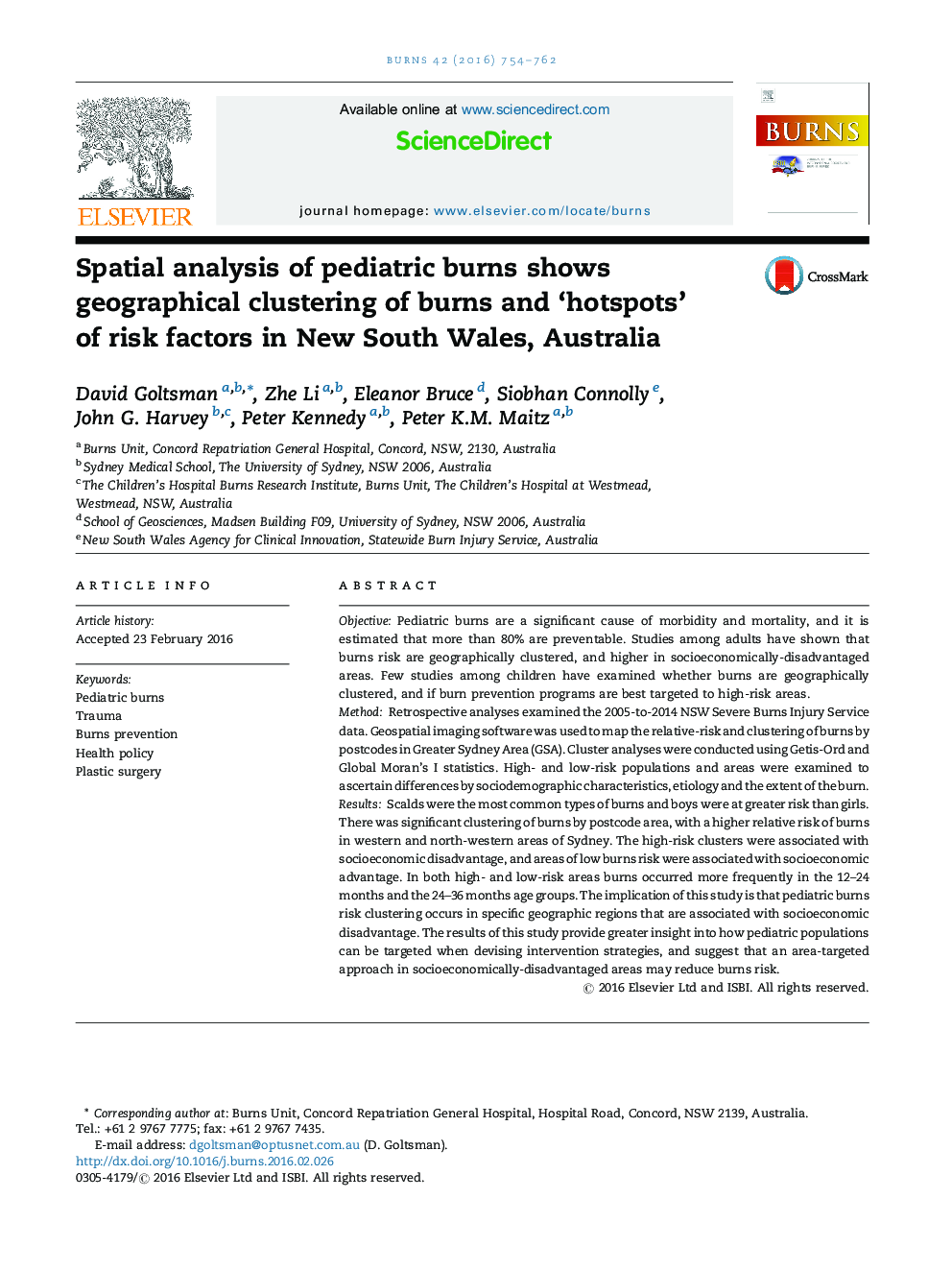| کد مقاله | کد نشریه | سال انتشار | مقاله انگلیسی | نسخه تمام متن |
|---|---|---|---|---|
| 3104082 | 1191641 | 2016 | 9 صفحه PDF | دانلود رایگان |
• Pediatric burns risk clustering occurs in specific geographic regions that are associated with socioeconomic disadvantage.
• Residents of these areas were less likely to apply adequate first aid.
• Pediatric populations can be targeted when devising intervention strategies.
ObjectivePediatric burns are a significant cause of morbidity and mortality, and it is estimated that more than 80% are preventable. Studies among adults have shown that burns risk are geographically clustered, and higher in socioeconomically-disadvantaged areas. Few studies among children have examined whether burns are geographically clustered, and if burn prevention programs are best targeted to high-risk areas.MethodRetrospective analyses examined the 2005-to-2014 NSW Severe Burns Injury Service data. Geospatial imaging software was used to map the relative-risk and clustering of burns by postcodes in Greater Sydney Area (GSA). Cluster analyses were conducted using Getis-Ord and Global Moran's I statistics. High- and low-risk populations and areas were examined to ascertain differences by sociodemographic characteristics, etiology and the extent of the burn.ResultsScalds were the most common types of burns and boys were at greater risk than girls. There was significant clustering of burns by postcode area, with a higher relative risk of burns in western and north-western areas of Sydney. The high-risk clusters were associated with socioeconomic disadvantage, and areas of low burns risk were associated with socioeconomic advantage. In both high- and low-risk areas burns occurred more frequently in the 12–24 months and the 24–36 months age groups. The implication of this study is that pediatric burns risk clustering occurs in specific geographic regions that are associated with socioeconomic disadvantage. The results of this study provide greater insight into how pediatric populations can be targeted when devising intervention strategies, and suggest that an area-targeted approach in socioeconomically-disadvantaged areas may reduce burns risk.
Journal: Burns - Volume 42, Issue 4, June 2016, Pages 754–762
